Spotted Salamanders at Consecration Dell
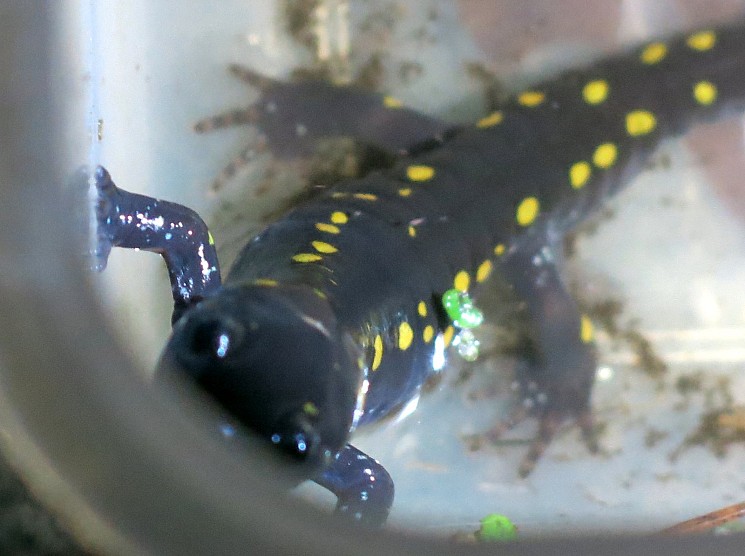
by Chris Leahy
Spotted Salamanders spend most of their lives beneath the forest floor feasting on earthworms and other fossorial invertebrates. But once a year during the rainiest nights of early spring, legions of this and other species of mole salamanders emerge from wooded hillsides and crawl through the leaf litter down to temporary Vernal pools in the forest to made and lay their eggs.
- Spotted Salamander by Hilary Hopkins
- Female on the right, swollen with eggs.
- Spotted Salamander egg mass. Photo by Tom Johnson
- Joe Martinez, Herpetologist. Photo by Tom Johnson
Following the mating ritual the female salamanders remain in the pools for a few days at most and then follow the already departed males back to their home underneath the forest. Remaining in the pools are the gelatinous, baseball-sized egg masses affixed to tree branches that have fallen into the water. The larval salamanders that hatch from the eggs within two months must survive a host of predators and gain sufficient size before their temporary birthplace dries up in late summer. Then they too move into the forest and take up their life underground.
In the words of professional herpetologist Brian Windmiller, the vernal pool that lies unassumingly at the bottom of Consecration Dell “is one of the most interesting and ecologically significant vernal pools in eastern Massachusetts.” During a visit in 1989, Dr. Windmiller counted 750 egg masses in the pool, which translates by his estimate into an adult population of more than 3,000 individuals. This dense population is all the more extraordinary in that it has existed and continues to thrive in the midst of a densely populated urban area.
Due to their temporary nature, vernal pools are not protected under the Massachusetts wetlands protection act resulting in a steady decline in populations of Spotted Salamanders and other vernal pool species in recent decades. The staff at Mount Auburn Cemetery is especially vigilant in protecting both the aquatic and woodland habitats of the remarkable Dell population. Fallen branches are left in the water, egg masses are carefully counted and their productivity monitored each year by Joe Martinez, Harvard University Curatorial Assistant, Department of Herpetology, Museum of Comparative Zoology, and the on-going restoration of native vegetation on the slopes of the Dell is designed to provide maximum benefit and pose minimal risk to the salamanders.
This article is adapted and excerpted from “A Guide to Consecration Dell at Mount Auburn Cemetery.” 2006.
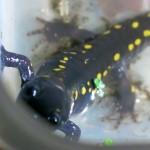
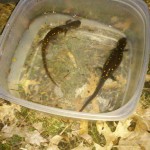
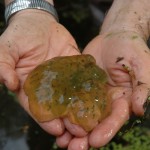
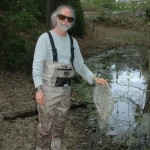
Leave a Reply